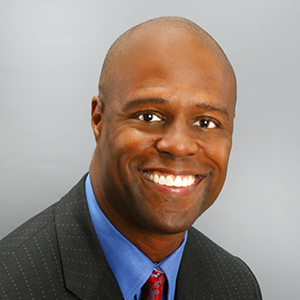Q: Christopher, I understand that, as last year, you'll be running another Kaizen Capture The Flag Event in which your Cyber Training Center professionals provide challenges designed to build participants' scripting, network forensics, and Web/binary exploitation skills. How does that challenge work and why would Black Hat conference-goers be interested in signing up?
Christopher Ling: Each year we've changed the style of Kaizen to keep it new, fresh, and interesting, even to former participants. This year, Kaizen is providing a penetration-testing-style Capture the Flag (CTF). This style speaks to the skills that are in high demand in today's cyber security market. Participants can expect to hack "live" infrastructure to solve a variety of reversing, forensics, and crypto challenges. We encourage participants of all skill levels to attend Kaizen. Our Kaizen developers focus hard on making sure they build a wide variety of challenges that cater to all types of varying skillsets and skill levels from novice to expert.
Black Hat conference-goers sign up for Kaizen year after year because of the fun, challenging, and competitive environment that it creates and because it introduces them to real-world technical challenges. Additionally, these challenges tend to push participants beyond their current skillsets, leaving them with a great feeling of fulfillment. There is no better way to build a technical skillset than to participate in a live training event such as Kaizen. Participants will learn new skills on-the-fly and gain valuable skills that can immediately be applied to their current work environment. Finally, the top three participants will win prizes.
Q: BAH has said that, if the past 12 months saw a dramatic increase in data breach activity, the year ahead promises to bring an entirely new set of concerns – and a shift in how companies are responding to the cyber threat. Exactly what is that new set of concerns and what will be the new way companies respond?
Ling: The scope and long-term damage associated with cyber incidents are continuing to escalate. Connectivity in an IoT world is expanding the "attack surface" and adding another dimension of risk, complexity, and exposure. This is forcing the c-suite to rethink cyber response and move to an anticipatory defense – one that looks over the horizon at emerging threats. And as companies witness or experience the inevitable business impact of a cyber event, some are assigning to a business leader within the c-suite the responsibility of driving response activities across all facets of the organization. This is a departure from assigning the multi-dimensional job to a technology executive. This leader spearheads corporate resiliency efforts, which includes rigorously training on the full range of corporate and public issues that may result because of a breach.
Q: Analysts are forecasting a shortfall of 1.5 million IS professionals by 2020 and your EVP Angela Messer is offering strategies for addressing that shortage. Give me a rundown of the top strategies for closing that gap.
Ling: That question is a great one and it's best to parse it into the two underlying issues: (1) How can I solve the talent shortfall for my own organization, and (2) What can be done at the macro-level to address this continued shortfall moving forward?
Many leaders are concerned with how we can more readily protect our systems and meet the needs of both our clients and customers. Here we need to identify which cyber functions or responsibilities can be automated or outsourced and the ones that are truly mission-critical to our organization. After we identify the critical functions, each CISO and CIO must ask: "Do I really have the talent and capability in-house to meet this critical need, and if I don't, does it make business sense for me to hire or train the talent internally?" If the answer is "yes," then the organization really needs to identify the talent with the highest probability of impact and ability to meet rapidly evolving cyber threats through valid assessment of personality, aptitude, and skills predictive of success in cyber roles.
We're using our cloud-based CyberSim, which has over 275 challenges based on up-to-date cyber and threat intelligence, to identify the individuals who are the "smart bets" for limited training, development, and stretch assignment resources. At Booz Allen, we work in concert with our client-facing cyber experts and real-time threat intelligence center to rapidly update our Cyber University offerings to the benefit of both our clients and ourselves. Over time, the wagering of multiple "smart cyber talent bets" will translate into a force multiplier of sorts. Fundamentally we seek to "bend the client's demand curve." From precision-guided, surgical threat-based cyber workforce planning to specialized career paths to retention strategies, we aim to position our clients to compete for and win the war for scarce cyber talent.
Second, we know we will not solve the talent shortage alone. Rather, we advocate for a variety of strategies and initiatives requiring close collaboration among industry, government, and academia. No one sector has the magic bullet to solve the talent crisis. Thoughtful investment in the early identification of potential sources of cyber talent across geographies, public and private investment in these sources at both the local economy and educational institution (e.g., high school, community college) levels, and implementation of an agile curriculum development strategy are fundamental to success. Likewise, internships, apprenticeships, and entry-level pathways for post-secondary education students will ensure the sustainment and continued investment into this talent pipeline.
Once this pipeline has been identified and established, we need to maintain it by reaching out early to tomorrow's cyber leaders and professionals through active outreach programs such as hack-a-thons or government-sponsored competitions. Most importantly, we want to open up new sources of talent or expand use of talent that is still untapped (community college students, returning service members, minorities, and women).
Q: Each year BAH signs up to present a sponsored workshop. Why has that become an important part of your marketing strategy?
Ling: The Booz Allen Hamilton team truly enjoys and looks forward to sponsoring the Black Hat USA conference every year. People are at the center of our company, and we thrive on building broad and deep technical knowledge. We get excited about engaging with like-minded attendees on a technical level. For three years in a row -- and as the first to provide a CTF workshop -- we've showcased and shared some of our technical expertise and tradecraft with other information security professionals, all while still allowing a flexible "choose your own adventure" environment. We've received rave reviews year after year and, consistently, it's a standing-room-only event.








